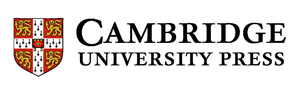Special Session SS4
30 June 2017
Star-planet interactions
Aims and scope
The goal of this session is to monitor the endeavors made by the community in the understanding of star-planet interactions, both on the theoretical and observational point of view.
The knowledge of star-planet interactions is crucial to understand the structure of the planetary systems we observe. This is especially true for close-in systems which are molded by tidal and magnetic interactions between the star and its planets. Tidal interactions can modify the spin of the star (i.e., when a planet falls onto the star, the star spins up), which in turn impacts its magnetism, which also impacts the planets. These phenomenons are tightly linked and the whole picture is needed.
In order to better understand these phenomenons, a good knowledge and modeling of the star are needed. The parameters of the star are obtained with spectroscopy or photometry and they are then used by the community to model stellar evolution and to investigate the interactions between the planets and the star. The accuracy of these parameters impacts the precision on the knowledge of the planetary systems. Besides, some correlations can be found between stellar characteristics (e.g., chemical abundances) and the presence and position of planets.
We believe that the reunion of both the theoretical and observational community will allow for new ideas to emerge in order to better characterize the stars and understand the structure of planetary systems.
All the speakers and poster authors will be invited to provide proceedings. A collection of participant contributions will be made available through Zenodo, an EU funded data and project repository (open access) and it will be indexed by ADS.
Programme
- Determining stellar characteristics, impact on planetary characteristics. This block focuses on the observational side of the question, with 2 axes:
- What is the repercussion of errors on stellar parameters on the planetary parameters?
- Is there any correlation between the characteristics of the star (i.e., metallicity) and the positions of the close-in planets?
- Stellar modeling. This block focuses on the theoretical works made in the modeling of stellar characteristics, these models use the observations of the star (radius, effective temperature?) and are used for the orbital modeling, as well as the computation of tidal and magnetic interactions between stars and planets.
- Tidal and magnetic interactions.
This block would aim to use the results on stellar modeling to better understand and model star-planet interactions.
Invited speakers
Scientific organisers
Emeline Bolmont, Sergi Blanco-Cuaresma
Contact
emeline.bolmont @ cea.fr, Sergi.Blanco @ unige.ch
Updated on Tue Dec 06 16:57:29 CET 2016
|

 A power cut will shut down all EAS services on Tuesday, 10 January 2017 starting at 7:30 CET.
A power cut will shut down all EAS services on Tuesday, 10 January 2017 starting at 7:30 CET.




















